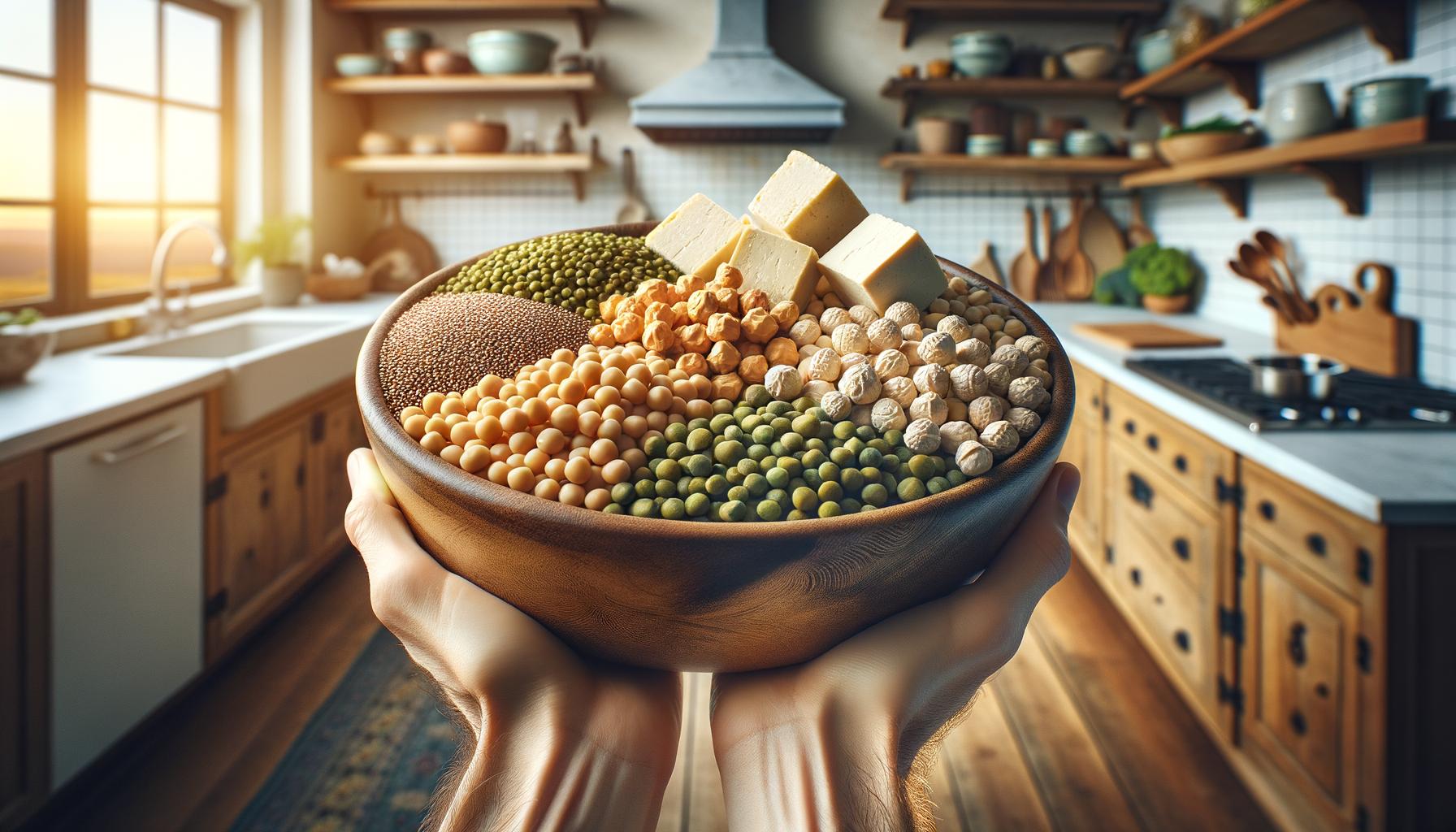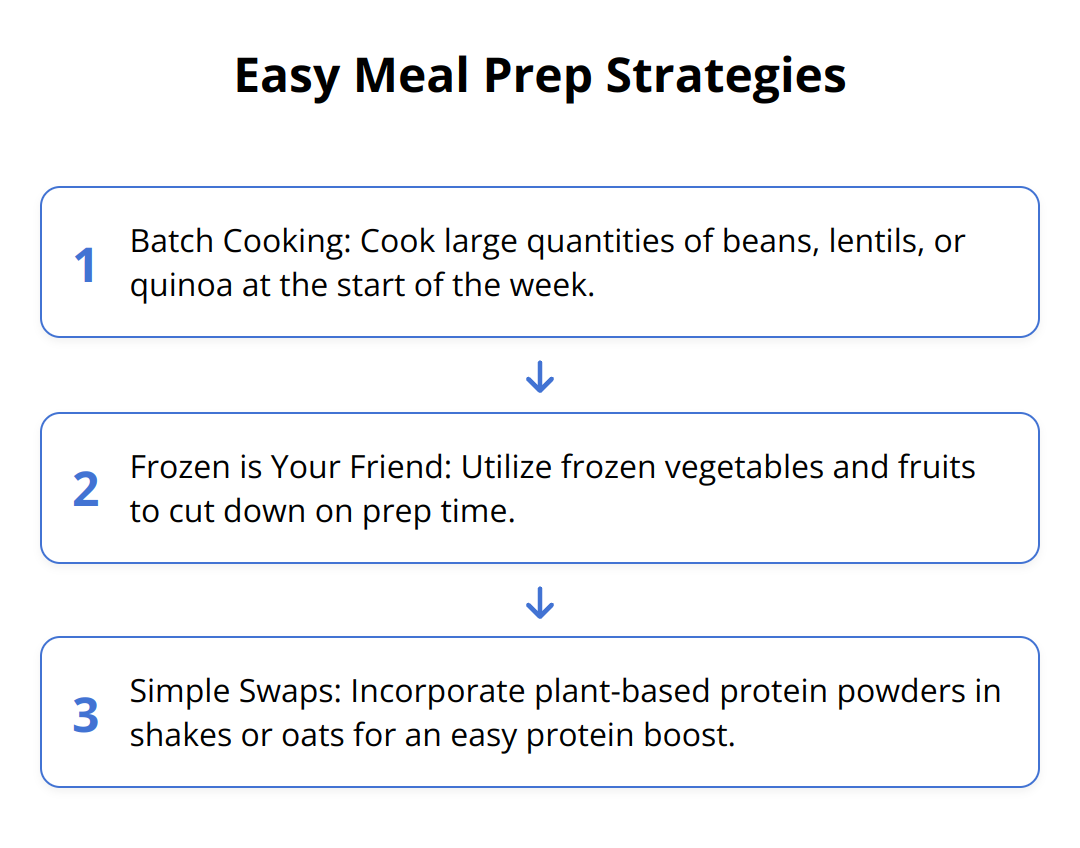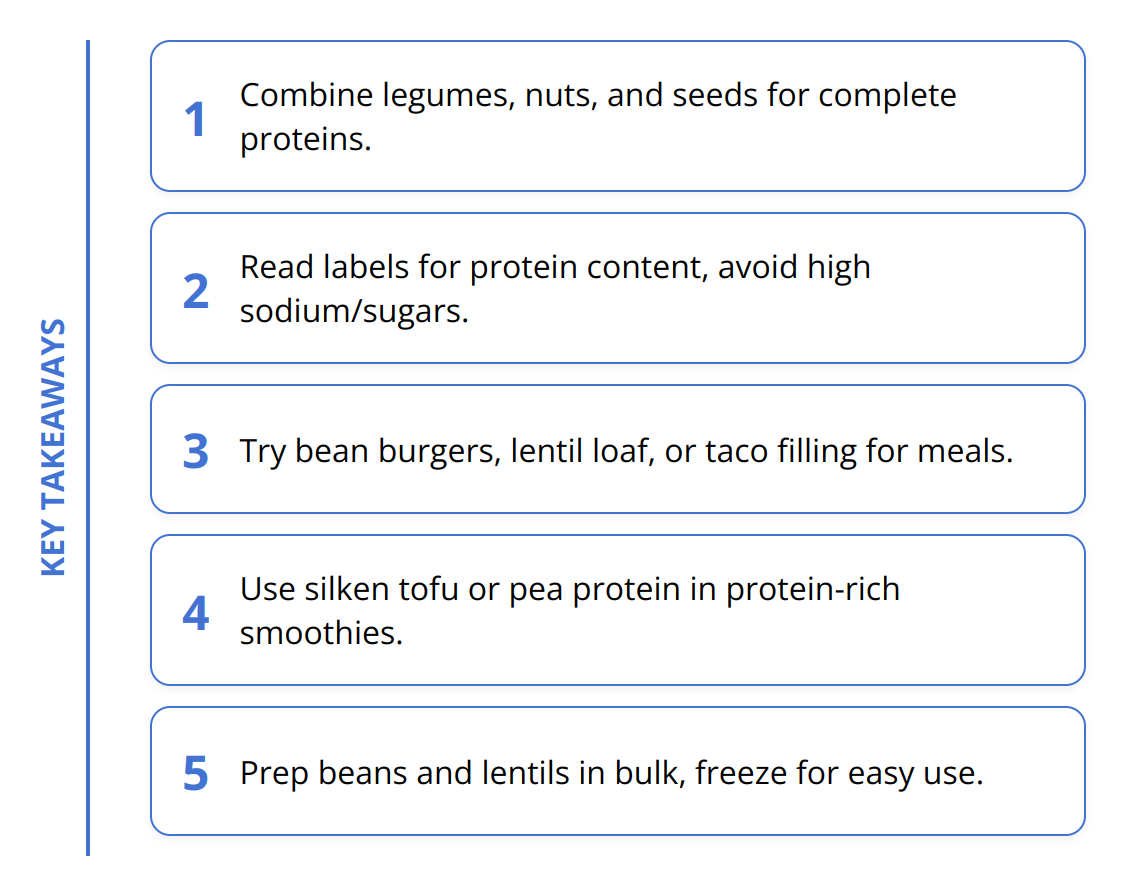Plant-Based Protein Sources: Practical Tips

At Healthy Tips You Blog, we understand the importance of integrating plant-based proteins into your diet. With a focus on health and sustainability, navigating the world of legumes, nuts, and seeds can sometimes seem daunting.
This article aims to simplify that journey, offering practical advice for identifying, incorporating, and making the most out of plant-based proteins. Whether you’re a seasoned vegan or just looking to diversify your diet, our tips and tricks will make your transition smoother and tastier.
Quality Plant-Based Proteins
Finding the right plant-based proteins is key to a balanced diet, especially when you’re looking to either supplement or completely replace animal proteins. Understanding the difference between complete and incomplete proteins is a good starting point. Complete proteins contain all nine essential amino acids our bodies can’t produce on their own, a feature most animal proteins offer. However, many plant-based options are considered incomplete because they might lack one or more of these amino acids. The good news is that eating a variety of plant-based foods can ensure you get all these essential nutrients.
The Best Plant-Based Proteins
When it comes to plant-based proteins, legumes, nuts, and seeds are your best friends. Legumes like lentils, chickpeas, and black beans are not only high in protein but also fiber, iron, and zinc. Nuts and seeds, including almonds, chia seeds, and flaxseeds, offer healthy fats, vitamins, and minerals on top of their protein content.
Here’s a quick rundown of some top picks:
-
Lentils: 18g of protein per cup (cooked)
-
Chickpeas: 15g of protein per cup (cooked)
-
Almonds: 6g of protein per ounce

Reading Labels for Protein Content
Shopping for plant-based proteins can be overwhelming, but getting familiar with nutrition labels can make it easier. When checking out packaged foods, look for the protein content per serving. However, be mindful of the sodium and added sugars, which can be high in processed foods. For whole foods like legumes and nuts, doing a quick online search for their nutritional content can help you make informed choices.
Practical Tips:
-
Mix and match: Combine different plant-based proteins to ensure you’re getting all essential amino acids.
-
Go whole: Opt for whole-food sources of plant-based proteins like beans and nuts over processed options to maximize nutritional benefits.
-
Check the labels: Always read nutrition labels for protein content as well as added ingredients.

Incorporating a variety of plant-based proteins into your diet not only benefits your health but also supports environmental sustainability. With these tips, you can confidently navigate your way through the world of plant-based proteins, making your meals both nutritious and delicious.
For more detailed guidance on plant-based diets, explore our articles on healthy eating habits and Mediterranean diet basics.
Adding Plant Proteins to Your Diet
Exploring the versatility of plant-based proteins can transform your meals from mundane to mouthwatering while nourishing your body. Beans, lentils, nuts, and seeds are not just protein-packed; they’re also vehicles for flavor and texture that can elevate any dish. Let’s look at practical ways to incorporate these nutritional powerhouses into your meals.
Beans and Lentils: More Than Just Sides
Beans and lentils are incredibly versatile and can be the star of any meal. Their ability to absorb flavors makes them perfect for a variety of dishes. Here are a few ideas:
-
Bean burgers: Mash up your favorite beans with spices, breadcrumbs, and an egg substitute for a vegan binder. Shape into patties and pan-fry or bake.
-
Lentil loaf: A hearty alternative to meatloaf, using cooked lentils, oats, nuts, and your choice of seasonings.
-
Taco filling: Seasoned lentils or black beans make an excellent, protein-rich filling for tacos and burritos.
-
Soups and stews: Both lentils and beans can be the protein-packed backbone of comforting soups and stews.
Smoothies: A Protein Punch
Protein-rich smoothies are an excellent way to start your day or refuel after a workout. The key is combining flavors and textures that blend well together.
-
Opt for silken tofu or pea protein powder as a smoothie base for their neutral taste and creamy texture.
-
Hemp seeds or a tablespoon of almond butter can add protein and richness.
-
For sweetness and fiber, incorporate bananas or berries.
-
Don’t forget leafy greens like spinach or kale for an extra nutrient boost.
Nuts and Seeds: Snacks and Beyond
Nuts and seeds are more than just snacks; they can enhance meals in countless ways.
-
Salad toppings: Sprinkle pumpkin seeds or sliced almonds on salads for a satisfying crunch.
-
Yogurt mix-ins: Add chia or flaxseeds to your morning yogurt for a fiber and protein boost.
-
Homemade granola: Combine oats, a variety of nuts and seeds, and bake with a touch of maple syrup for a healthy breakfast or snack option.
-
Breading: Crush nuts and use them as a coating for baked vegetables or protein patties.
Practical Tips:
-
Soak your nuts and seeds overnight to improve their digestibility and nutrient availability.
-
Experiment with spices and herbs to enhance the natural flavors of beans and lentils.
-
Prep ahead: Cook beans and lentils in bulk and freeze in portion-sized bags for quick, protein-packed additions to meals.

Incorporating plant-based proteins into your meals is straightforward and offers a pathway to improved health and wellness. By getting creative with beans, lentils, nuts, and seeds, you can enjoy a variety of delicious and nutritious dishes that support both your body and the planet.
For insights on creating balanced plant-based meals, check out our guide to developing healthy eating habits.
Overcoming Plant Protein Challenges
When introducing more plant-based proteins into your diet, you may encounter a few common hurdles, such as adapting to new tastes and textures, finding these foods in your local grocery store, and fitting meal prep into a hectic schedule. These challenges are surmountable with the right strategies.
Adapting to New Tastes and Textures
One of the biggest obstacles people face is getting used to the unique tastes and textures of plant-based proteins. Here’s how to navigate this:
-
Start Slow: Gradually incorporate plant proteins into dishes you already enjoy. Adding lentils to a beef stew or chickpeas to a chicken salad can ease the transition.
-
Use Familiar Flavors: Season beans and lentils with spices and herbs you already like. If savory is your go-to, experiment with garlic, cumin, and chili. Sweet lovers can try cinnamon or nutmeg with nut-based dishes.
-
Texture Matters: If you’re not keen on the texture of certain legumes, try blending them into smoothies or soups for a creamier feel.
Finding Plant-Based Proteins
Though it might seem plant-based proteins are less accessible, many are readily available if you know where to look:
-
Explore Different Sections: Besides the produce aisle, check the international, organic, and even frozen food sections of your store.
-
Bulk Buying: Many stores have bulk sections where you can find nuts, seeds, and grains at lower prices.
-
Online Shopping: If your local grocery store has limited options, online retailers offer a vast array of plant-based proteins.

Finally, remember that transitioning to a diet rich in plant-based proteins is a journey. Listening to your body and adjusting based on what works best for you is key. For inspiration, check out our total body transformation fitness plan that includes tips on incorporating plant-based proteins into your fitness routine.
In the next chapter, we will explore creative recipes and meal ideas to keep your diet varied and interesting, making sure that you’re not just eating healthy but enjoying delicious meals too.
Wrapping Up
As we’ve navigated through the essentials of plant-based proteins, it’s clear that integrating legumes, nuts, and seeds into your diet is a strategic move towards better health and sustainability. These powerhouses of nutrition offer a wealth of benefits, from providing the necessary amino acids to enriching our meals with fiber, vitamins, and minerals. Embracing a variety of plant-based proteins ensures a balanced diet and supports the body’s overall functioning.

We at Healthy Tips You Blog encourage you to explore and experiment with different plant-based proteins. Whether you’re sprucing up your smoothies with hemp seeds, crafting bean burgers, or tossing almonds into your salad, each step is a leap towards a healthier you. Remember, the journey to incorporating more plant-based proteins into your diet is as flavorful as it is beneficial. It opens up a realm of culinary possibilities, waiting to be explored.
The benefits of adopting a diet rich in plant-based proteins extend beyond individual health. It’s a choice that respects our planet and contributes to a sustainable future. As you embark on this journey, remember that every meal is an opportunity to nourish not just your body, but also the environment.
For more information on leading a healthier, more sustainable lifestyle, delve into our comprehensive guides and meal plans at Healthy Tips You Blog. Discover the Mediterranean diet, a testament to the power of plant-based eating, and embrace a way of life that celebrates the abundance and variety nature has to offer.
In conclusion, the advantages of integrating more plant-based proteins into your life are numerous. Health improvements, environmental sustainability, and a richer, more diverse diet are just the beginning. Let’s continue to share, learn, and grow in our journey towards wellness. Explore, experiment, and enjoy the vast world of plant-based proteins for a happier, healthier future.







11 Comments